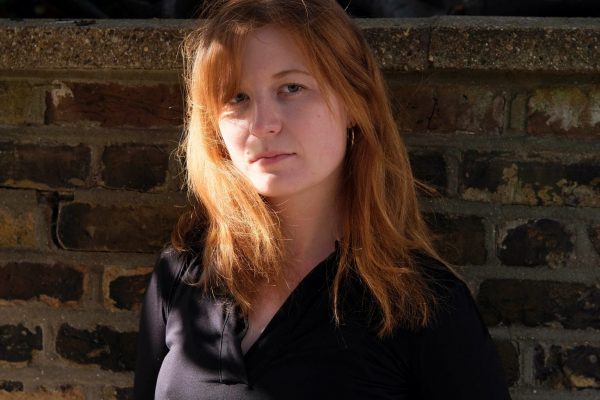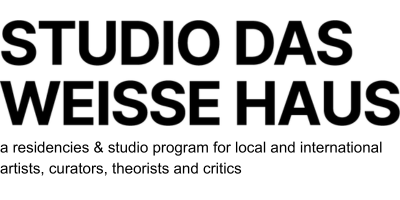Weekly Conversations… with Hatty Nestor (Critic in Residence 2019)

Hatty Nestor is a writer based in London. She has been published in Frieze, BOMB magazine, The White Review and Art in America amongst many other publications. She studied at Goldsmiths College and the Royal College of Art, and is pursuing a PhD in Gender Studies and Writing at Birkbeck in October 2019.
You are interested in theories and questions of gender, identity, belonging, feminism and knowledge production, and approaches writing and criticism from a creative non-fiction perspective. Can you tell us something about your work?
I’ve always approached writing as a way to work through how I feel and think about the boundaries between art and life. I try to approach writing as a craft – something which I get better at, I fail at, I go back and change, undo and reimagine. But criticism demands the writer to formulate an opinion, stick to it, and follow it through. In this way, criticism is an action.
Writers, and the press hold a lot of power in terms of who gains visibility, who gets represented and archived. These are, of course, socio-political and economic issues – marginalised members of society are usually overlooked, their voices erased by the mainstream press. With this in mind, I attempt to use writing as a tool to change this relationship and restate agency for those who might not always be heard. This could mean through interviewing – second person voice or using anecdotes from different parts of their life. Nonetheless, an act of representation always takes place.
I’ve consistently been influenced by female writers; Maggie Nelson, Janet Malcolm, Ann Cvetkovich and Lucy Lippard, all of whom are experts at the blurring of form and subject matter. Combining creative non-fiction with other modes of criticism and autobiography has been central to this pursuit. I am also interested putting academic writing through a kind of ‘experiential’ filter of sorts, to make complex theoretical ideas more digestible to a wider audience. I hope the topics I explore – gender subordination, feminist archival histories and ethics – make a small contribution to a new canon of writing which doesn’t hinge entirely upon patriarchal knowledge systems.
In the framework of Crit Cross #7 you will discuss your essay “Facing future feelings: The portrait of Chelsea Manning”, which will appear in your book and was first published in The White Review in 2018. Can you tell us more about it?
Currently, there is perhaps nobody more admired than Chelsea Manning within left wing politics. Not only did she expose some of the most horrendous archives of violence, she also advocates for trans rights internationally. The combination of these two acts make her a compelling role model to many. Yet whilst she was incarcerated, she was perpetually denied hormone treatment, visitation, kept in solitary confinement, and so on. I interviewed an illustrator, Alicia Neal, who created a drawn portrait of Manning whilst she was incarcerated – one that was integral to Manning’s identity as a trans woman. Since her release much of this has been discussed by her directly but at the time of interviewing Alicia Neal, she was still in solitary.
It felt important to explore what ‘aesthetic justice’ might mean in this instance of portraiture. How was Manning denied visibility by the state? What did it mean for her to have hormone treatment denied, and how was this articulated to the public? My exploration of Manning took into account these restrictions upon her representation, alongside Alicia Neal’s role in providing this representation, and ultimately, the complex political scenario in which the portrait emerged.
As mentioned before, you are currently working on a book about portraits and representations in the criminal justice system. It’s entitled „Ethical Portraits“ and will be published shortly. How was your experience working on a book?
Ethical Portraits emerged from some of the issues I explained in the first question, and also my interest in the US prison system – a multi billion dollar business. We can’t forget that the US incarcerates more of its citizens (mainly those of colour) than any country in the world. The term ‘Ethical Portrait’ refers to the circumstances where people are — or are not — integrally represented by this system. They are often misrepresented, too. This is a vast, complicated terrain of the function of ‘recognition’ which raises complex questions about the portrait as a window into someone’s character, but also how these depictions always rely on a second party input: the artist. This relationship can be particularly fraught when the portrait cannot be conducted in person, due to the physical limitations of incarceration.
I decided to interview a mixture of artists and professionals who, in some way, have produced portraits for or about this system. This ranges from courtroom artists, forensic illustrators, photographers and activists. All of the subjects have different political undertakings, perspectives and practices – the project is more about uncovering the different representations linked to the prison industrial complex, as a contemporary archive. The text intersects my experiences of travelling around America and my interviews with the aforementioned subjects, as a way to negotiate theory and criticism. My hope is that it functions as an oral histories project, raising awareness about how we consume images of prisoners. Writing can serve as a tenderness, collective act, and above all a form of visibility.
Interviewer: Teresa Wally
